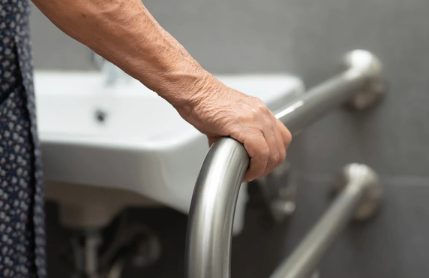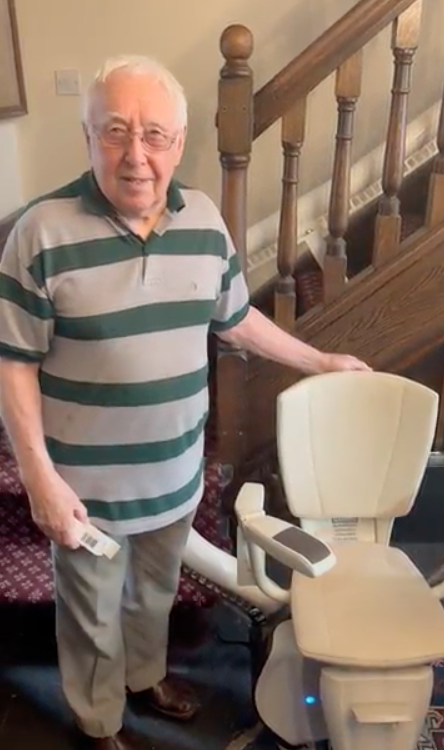
In certain situations it’s worth getting the advice of an occupational therapist if you’re considering a stairlift. An occupational therapist (OT) will assess your situation and help you determine whether a mobility aid is right for you.
If you’re in the UK, your local council offers a free service that assesses your home and recommends changes to help. So if you’re struggling with mobility issues, you can qualify for free help and support. See our post on free stairlifts for pensioners.
Changes can be big and small, such as:
- the fitting of a stairlift or bannister rail
- adding a bath lift, or walk in shower
- widening doorways
- lowering kitchen worktops
- putting in an outdoor ramp
- security provisions, such as an outside light
You may even quality for a free stairlift, using the disabled facilities grant, which an OT can help you with. See also home adaptations through the nhs.

If you need to adapt your home because of old age or disability, you can apply to the council for a home assessment for equipment or help, or both.
Why Use An Occupational Therapist Before Getting A Stairlift?
A home assessment by an occupational therapist will usually take about an hour. In that time they will walk around your home and ask your questions about your general health and mobility. This is sometimes referred to as a needs assessment. It’s a good idea to have a family member with you or a friend during the assessment. They can help give you support and convey any difficulties you might be having to the assessor.
Small adaptations to help you in your home are often free, and your counsel should pay for adaptations which cost less than £1000. These are items such as grab rails, ramps and lighting, for example. For more costly fittings, such as a stairlift, you may qualify for a grant (the disabled facilities grant DFG).

Your occupational therapist can help you with the application process. To qualify for this you must meet certain criteria. Here’s a few main points to qualify for the DFG:
- are physically disabled
- have a learning disability
- have age-related needs
- are autistic
- have a cognitive impairment, like dementia
- have a progressive condition, like motor neurone disease
- have a terminal illness
- have a mental health condition
Why Use An Occupational Therapist Before Getting A Stairlift?
So, if you get an OT in to help assess your situation, you can benefit from a more thorough assessment, helping you get the right equipment for your needs. You can also qualify for financial assistance and help in the application process through your occupational therapist.
The downside is that it can take several weeks to obtain the services of an occupational therapist. If your situation is urgent, such as if you’re expecting a hospital discharge, you can state this when applying and this can speed up the process. Still, getting an OT to do a home assessment isn’t right for everyone. If your situation is such that you can’t wait, it might not be so appropriate if you need a stairlift urgently.
Getting an occupational therapist is useful if you have plenty of time, and/or are in definite need of financial assistance. But if you’re in a hurry, and don’t need a grant to get a stairlift, it’s quicker to simply book an assessment with a stairlift engineer. They can assess your health, and also help determine whether a stairlift is appropriate and possible for your home.
Is A Stairlift Is Suitable For You?

If you do decide to go for a stairlift, you’ll likely be assessed for suitability. Not everyone can operate a stairlift, or is safe in one. So the main questions you’ll be asked are:
- Can you sit comfortably with your legs underneath you in the stairlift?
- Will the stairlift actually fit in the property?
- Can you comfortably operate the controls – holding down the button for the duration of the trip
- Is your condition likely to worsen, and if so, will you be comfortable with stairlift operation?
- Are you safe to operate the stairlift unsupervised

